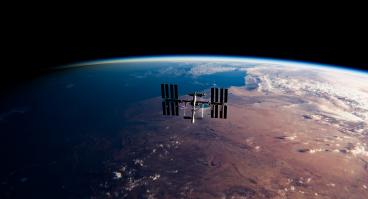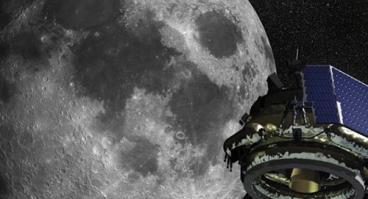
Table of Contents
Author(s)
George W.S. Abbey
Former Senior FellowShare this Publication
- Download PDF
- Print This Publication
- Cite This Publication Copy Citation
Abbey, George W.S. 2021. NASA’s Space Launch System. Policy Brief: Recommendations for the New Administration. 02.17.21. Rice University’s Baker Institute for Public Policy, Houston, Texas.
Tags
This brief is part of a series of policy recommendations for the administration of President Joe Biden. Focusing on a range of important issues facing the country, the briefs are intended to provide decision-makers with relevant and effective ideas for addressing domestic and foreign policy priorities. View the entire series at www.bakerinstitute.org/recommendations-2021.
NASA is currently developing the largest rocket the United States has ever built, the Space Launch System (SLS). It will be capable of carrying between 150,000 and 290,000 pounds to lower Earth orbit.
At the same time, aerospace industrial companies have and are developing a series of heavy-lift launch vehicles. SpaceX has already flown their Falcon Heavy, a larger version of the Falcon 9 rocket. The United Launch Alliance (ULA) is also developing a new launch vehicle called the Vulcan that’s scheduled to fly in 2021 or 2022. And Blue Origin, a third U.S. aerospace company, is developing the New Glenn, a launch vehicle that will be able to deliver 100,000 pounds to lower Earth orbit.
While the SLS is to have the capability to launch a larger payload than the commercial rockets that are currently under development and available, a key factor for a rocket is launch costs. Due to its high launch costs and the availability of other, more cost-effective commercial launch vehicles, the Biden administration should review the need for the SLS and take these factors into consideration during the negotiation of the annual federal budget.
A government cost estimate for flying a single SLS rocket was estimated to come to over $2 billion in a recent administration letter to the Senate Appropriations Committee.1 The commercially available SpaceX Falcon Heavy rocket, with two-thirds of the lift capability of the early version of the SLS, can be purchased for significantly less per launch. Reliability is also an important factor, and due to its launch costs, the SLS is unlikely to fly very often—probably only once or twice a year. With that launch rate, it will be difficult to build up any demonstrated reliability.
The SLS has also suffered significant cost overruns and schedule delays. A 2020 Office of Inspector General (OIG) report stated the cost of the booster had already grown by nearly 30% (about $2 billion) and that the first launch of the rocket, originally planned for late 2017, would be delayed to June 2021 or later.2 The lack of transparency relative to the program’s costs also made it difficult to determine the expected true cost of the program. NASA had estimated the development costs through its first launch to have grown to $8.75 billion, when a launch had been assumed in November 2020, an increase of 25%.3
That original commitment set the cost of SLS development through the first launch at $7 billion, a figure that does not include $2.7 billion in earlier formulation costs for the heavy-lift rocket. That commitment also missed costs associated with other aspects of the SLS program not directly tied to the first launch, which had the effect, the OIG concluded, of masking the actual cost growth of the program. It concluded that costs would grow by 33% through the end of fiscal year 2019 and by an estimated 43% through the new projected launch date.4
That assessment also did not capture the full cost of the SLS program, such as funds spent on work for the second or later launches. The OIG report estimated that NASA would spend $17 billion on the SLS through the end of fiscal year 2020, of which $5.9 billion was not included in the baseline commitment.5
NASA leadership, the report stated, acknowledged their cost management approach “is not a good fit for managing a long-term human exploration program with multiple planned missions over decades.”6 However, they decided to focus on costs through the first launch early in the SLS program, given the uncertainty about long-term plans.
“While we understand the difficulty of setting baselines long into the future, total SLS Program cost increases will not be readily transparent because NASA is not tracking and reporting all costs against an official baseline,” the report stated. “For example, NASA currently does not have a cost estimate for the second launch of the SLS and is not tracking or reporting cost impacts caused by schedule delays or technical challenges for that mission.”7
Since 2011, Congress has appropriated approximately $2 billion per year for the development of the SLS rocket.8 There are, in addition to other costs that are not included, hundreds of millions of dollars spent annually on ground systems development for the support of the rocket’s launch at the Kennedy Space Center. If these costs are amortized over 10 launches of the SLS vehicle, the cost would be approximately $4 billion per flight.9
The commercially available SpaceX Falcon Heavy will be able to carry more than 100,000 pounds to lower Earth orbit.10 That’s about half of the capability of SLS, but SpaceX is quoting a price per flight that will start at only $90 million.11 It’s possible that the price may increase somewhat depending on each mission, but if the vehicle does just three flights a year, it can get more into space than the SLS for a fraction of the cost. Meanwhile, Blue Origin’s New Glenn12 and a heavy-lift version of ULA’s Vulcan13 are expected to lift about the same weight. ULA and Blue Origin have not stated a cost to launch these vehicles. However, even if the rockets each cost $500 million to launch twice a year, they have already matched the SLS for a lower cost.
SpaceX is also developing another rocket—the Starship—a fully-reusable two-stage-to-orbit super heavy-lift launch vehicle. The Starship will feature six Raptor engines, three sea-level Raptors for atmospheric flight, and three vacuum-optimized Raptors for propulsion in space.14 Elon Musk, the CEO of SpaceX, has stated that a Raptor could eventually achieve a thrust-to-weight ratio of 200 and that, over time, a Starship will be capable to launch over 100 tons of cargo. “By any measure, the high thrust variant of Raptor will probably have the highest thrust-to-weight ratio of any engine ever,” Musk stated in a tweet on September 1, 2020.15 SpaceX is quoting that the Super Heavy will have a gross liftoff mass of over 3 million kilograms.
The second stage of the large rocket, also referred to as “Starship,” is being designed as a long-duration cargo, and eventually, a passenger-carrying spacecraft. It is being used initially without any booster stage, as part of an extensive development program to assess the launch and landing of the vehicle and to evaluate design variations associated with the vehicle’s atmospheric reentry. The spacecraft was tested on its own at suborbital altitudes in 2019 and 2020. It will later be utilized on orbital launches with an additional booster stage, the Super Heavy. On these flights, the spacecraft will serve as both the two-stage-to-orbit launch vehicle and the in-space orbital spacecraft.
Integrated system testing of a proof of concept for the Starship began in March 2019, with the addition of a single Raptor rocket engine to a reduced-height prototype. On December 9, 2020, at their test site in Boca Chica, Texas, a full-size prototype of SpaceX’s heavy-lift Starship launch vehicle was flown in a spectacular test flight and successfully guided itself to a beachside landing site before exploding at touchdown.16 The hard landing and explosion were due to unexpected low pressure in the methane header tank, resulting in the vehicle exploding on the landing pad. The successful completion of many test objectives on this test flight, however, was a major milestone for the Starship program. More prototype Starships have been built, and more are under construction as various design variations are to be tested.
The Super Heavy (the booster stage of the Starship) will have the capability to return from space and perform a controlled landing, powered by its Raptor engines. It will land on its legs, like the company’s Falcon 9 rocket. Falcon 9 is the first orbital-class rocket in the world that has successfully landed over 50 times, but it is only 80% reusable.17 SpaceX intends to develop a fully reusable Starship launch system.
In view of the current availability of a significant number of commercial launch vehicles with proven payload capabilities, as well as the industry’s progress in providing a launch vehicle with significantly greater lift capabilities, the Biden administration should reconsider the need for the SLS during its annual budget review. Its launch costs are much greater than those being quoted for existing rockets, as well as those projected for larger commercial boosters with comparable payload capabilities to the SLS. Affordability must always be considered in view of demanding budgets and in view of the availability and the acceptability of lower-cost alternatives.
Endnotes
1. Letter to the Chair and Vice Chair of the Senate Appropriations Committee, Executive Office of the President, Office of Management and Budget, October 23, 2019, https://www.whitehouse.gov/wp-content/uploads/2019/10/shelby-mega-approps-10-23-19.pdf.
2. Office of Inspector General, NASA’s Management of Space Launch System Program Costs and Contracts, Report No. IG-20-012, March 10, 2020, https://oig.nasa.gov/docs/IG-20-012.pdf.
3. Ibid.
4. Ibid.
5. Ibid.
6. Ibid.
7. Ibid.
8. Eric Berger, “NASA does not deny the “over $2 billion” cost of a single SLS launch,” Ars Technica, November 8, 2019, https://arstechnica.com/science/2019/11/nasa-does-not-deny-the-over-2-billion-cost-of-a-single-sls-launch/.
9. Ibid.
10. SpaceX, “Falcon Heavy,” https://www.spacex.com/vehicles/falcon-heavy/.
11. Michael Sheetz, “Elon Musk says the new SpaceX Falcon Heavy rocket crushes its competition on cost,” CNBC, February 12, 2018, https://www.cnbc.com/2018/02/12/elon-musk-spacex-falcon-heavy-costs-150-million-at-most.html.
12. Loren Grush, “Blue Origin releases animation of its future orbital rocket, and it looks really familiar,” The Verge, May 7, 2017, https://www.theverge.com/2017/3/7/14841128/blue-origin-ocean-landing-rocket-animation-spacex-comparison.
13. Tory Bruno (@torybruno), “Lots of requests to update the Capabilities info-G with the Vulcan Rocket,” Twitter, May 5, 2015, 11:37 a.m., https://twitter.com/torybruno/status/595628488410963970.
14. SpaceX, “Starship SN9 High-Altitude Flight Test,” https://www.spacex.com/vehicles/starship/.
15. Elon Musk (@elonmusk), “By any measure, the high thrust variant…” Twitter, September 1, 2020, 2:32 a.m., https://twitter.com/elonmusk/status/1300698052026683394.
16. Dave Mosher and Morgan McFall- Johnsen, “SpaceX just launched — and exploded — an experimental Starship rocket in Texas. The test nevertheless propels Elon Musk's vision of interplanetary travel closer to reality,” Business Insider, December 9, 2020, https://www.businessinsider.com/spacex-starship-sn8-rocket-41000-foot-launch-boca-chica-texas-2020-12.
17. SpaceX, “Falcon 9,” https://www.spacex.com/vehicles/falcon-9/.
This material may be quoted or reproduced without prior permission, provided appropriate credit is given to the author and Rice University's Baker Institute for Public Policy. The views expressed herein are those of the individual author(s), and do not necessarily represent the views of Rice University's Baker Institute for Public Policy.


